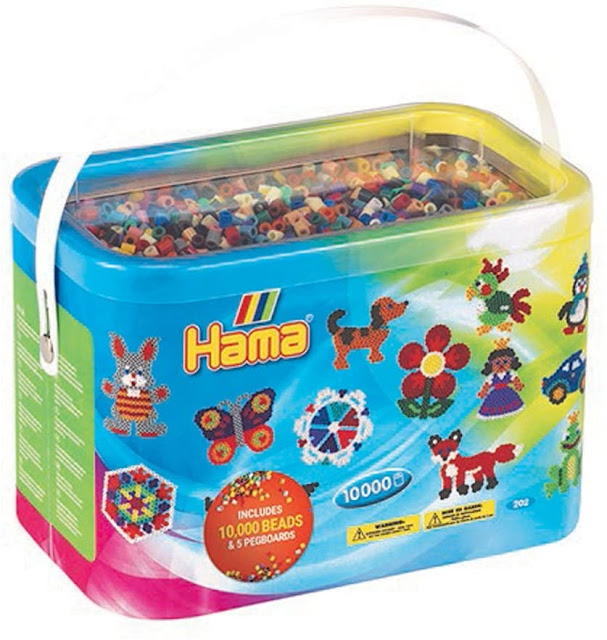Looking for some fun Easter activities to entertain the kids?
You've come to the right place!
Easter fuse beads patterns are a great way to keep the little ones busy and entertained.
Not only are they fun, but fuse beads are also a great way to teach kids about colours and shapes.
What are Fuse Beads?
Fuse beads are a type of craft bead that can be used to make a variety of different projects.
The crafts are made up of small, plastic balls that are placed together on a frame board.
Fuse beads can be used to create all sorts of designs and patterns.
They join together when ironed (melted) to form a soid object that can be used as a decoration, toy or even jewellery.
Need some beads? This huge tub of Perler beads has all the colours you'll need for these Easter projects and more!
Scroll down to get the free pattern...
How to Iron Fuse Beads
To fuse the colourful beads together, they need to be heated with an iron.
This process melts the beads together, essentially fusing them into one solid piece.
To do this, I like to use sheets of parchment paper over the design to protect the surface of the iron from any colour bleed or plastic melting onto it.
You may also want to lay parchment paper underneath the plastic peg board holding the beads to protect your surface or ironing board.
If you're in the UK and need some fuse beads, this handy tub contains all conceivable colours and several pegboards too.
Fuse Bead Ideas
There are a number of different ways to use fuse beads, so you can be as creative as you want.
One popular idea is to make a shape or design with the fuse beads.
This can be a great way to show off your kids' artistic talent, or just create a fun Easter decoration.
Another option is to use the fuse beads to make jewellery or decorative pieces for your table or wall.
Fuse beads can be a great way to get creative and come up with some unique designs.
You can use different colours, shapes, and sizes to create one-of-a-kind pieces of jewellery or decor that will stand out from the crowd.
Scroll down to get the free pattern...
Easter Fuse Bead Patterns
The great thing about fuse beads is that there are no set patterns or designs - the possibilities are endless!
Kids love them because they can have full creative control over making the piece.
Now that you have some basic fuse bead knowledge under your belt, it's time to try out some Easter patterns!
From bunnies and eggs, to chicks and lambs, there are so many fun ideas to make creative Easter designs.
Here are a few ideas to get you started:
Easter Bunny
This Easter bunny is simple, but cute and perfect for kids of all ages.
You'll need white, pink, and light purple fuse beads, as well as a small pink bead for the nose.
To make this bunny, start by creating a basic oval shape out of white fuse beads.
Next, use the pink and light purple beads to add colour and detail to the bunny's body.
Finally, add the small pink bead for the nose and you're done!
Easter Egg
This Easter egg is a classic design that is perfect for all ages.
You'll need white fuse beads, and two other colours, for example light green and light blue.
To make this egg, start by creating a basic oval shape out of white fuse beads.
Next, use the light green and light blue beads to add color and detail to the egg.
You can do polka dots, stripes, or even a simple checkerboard design.
Easter Chick
To make things even easier, here is an Easter Fuse Beads Pattern printable you can use to make an Easter chick.
The printable also has templates for Easter eggs and cute Easter coloured bunting.
Just sign up below to have the printables sent straight to your inbox!
With these easy Easter fuse bead patterns, you'll be able to keep the kids entertained all day long.
Have fun, get creative & Happy Easter!
More Easter crafts for kids:
Pin it:
This post contains product and service links for your convenience. By clicking on these links I may earn an affiliate commission at no additional cost to you. As an Amazon Associate I earn from qualifying purchases. I only suggest resources and items I believe in and highly recommend. Find out more on our Disclosure page.








